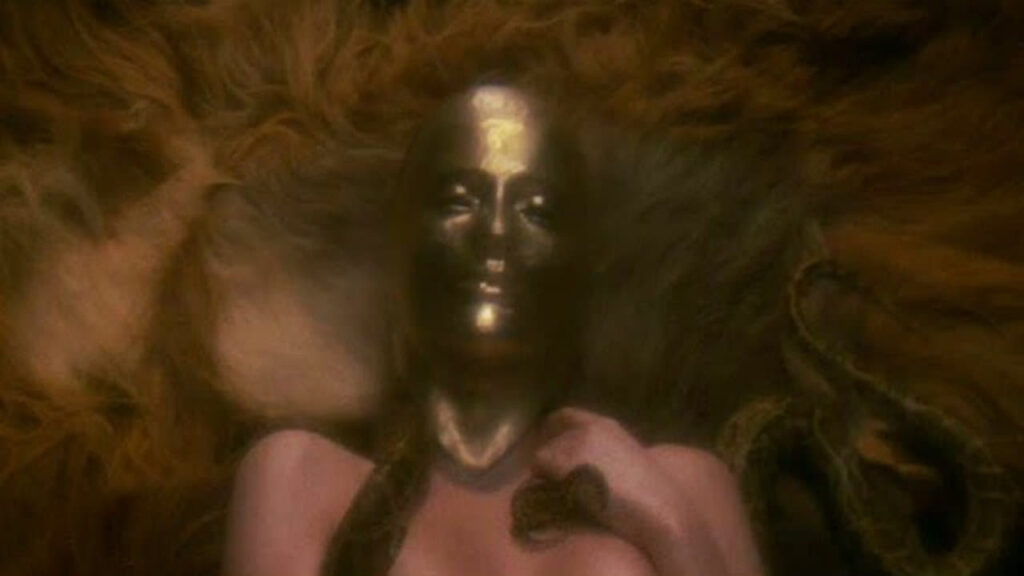Hello folks, and welcome back to Wrong Every Time. It has been an overstuffed week in shows and films on my end; in fact, I haven’t even yet finished writing up all the features I screened, having left myself the unenviable task of writing twelve film reflections just before compiling this piece. Alongside that, it’s been a week of catching up on One Piece, as we charged an Egghead refresher preceding the show’s triumphant return, and also breaking into Arcane’s apparently concluding second season. Plus there’s a whole new anime season premiering, and all these Godzilla films left to screen… things have been busy, but I have nonetheless emerged with my promised collection of reflections, here to nourish or at least distract with some ramblings on the wide world of cinema. Let’s get to it!
Our first viewing was Journey to the Center of the Earth, the 1959 adaptation of Jules Verne’s classic adventure novel. James Mason and Pat Boone star as an acclaimed geologist and his top student, who discover a path towards the center of the planet among the volcanic slopes of Iceland. Joined by a rival’s widow (Arlene Dahl) and the unflappable local Hans, they begin a long and perilous journey, contending with all manner of obstacles as they seek the secrets of the earth’s core.
Journey to the Center of the Earth is a film of charmingly dated special effects and delightfully detailed sound stages, sending its intrepid heroes through crystal caverns, across subterranean seas, and into the halls of lost Atlantis. The characters are a little fussier and more science-minded than modern adventurers, but I was nonetheless struck by how little has changed from the model Jules Verne perfected. The consistency of action highlights, the adversarial core romance, the boy sidekick – heck, the film even features an animal mascot in Hans’ brave duck Gertrude.
Even our modern skepticism regarding the preeminence of the scientific mind is on full display here, with Mason’s pompous deductions frequently being deflated by the discoveries of Dahl (or even the heroic Gertrude). Mason and Dahl possess fine chemistry, no dramatic setpiece outlasts its welcome, and the mixture of physical stages and painted backdrops keep up a steady flow of visual intrigues. An altogether easy, if not terribly exceptional, adventure viewing.

My unslakable thirst for wendigo-related cinema next led us to The Wendigo, a recent found footage production. We open with a streamer out in the woods on a well-funded dare, searching for monsters and apparently finding them. After the stream ends in a cacophony of screams and ambiguous shuffling in the distance, the streamer’s friends band together to hike out to his camp, find their friend, and hopefully score some excellent content in the bargain.
While many found footage productions just seem like they’re using the format to forego cinematography or actual actors, The Wendigo succeeds by using its format as a genuine dramatic resource. Fault lines between our players are articulated in the moments between their canned introes, characters naturally fall into the performative gossip of youtube beefs, and the whole rescue operation is lent a lurid, exploitative hue through the plainly mercenary aims of its participants. “We might not save our friend, but at least we’ll make some lucrative content” is the mission statement from the start, making it easy to look forward to the coming massacre.
In spite of their myopic, self-absorbed perspectives, I actually found myself growing quite fond of this group (excepting the resident misogynist douchebag). The wit of the script made me actually sympathize with why people might watch these channels, meaning the anticipation of horrors to come is matched by a welcome fear, the sense of vulnerability that can only be fostered by characters who warrant some protection. And though the film’s means are limited, its vision of the wendigo is actually quite striking, reaching a fine balance between implication and iconic horror imagery. An altogether solid found footage adventure, and an admirable interpretation of wendigoes in the balance.

We then concluded our journey through Megazone 23, screening the first and second fifty-minute installments of what is collectively referred to as “part three” of the franchise. Confusing titling aside, these segments continue the general environmentalist “cyber youth in rebellion” template of the original films, centering on a young man named Eiji Takanaka centuries after the events of the first films. Though the megazone has landed on earth, humanity is still trapped in a mechanical city, wherein Eiji expresses his talents as hacker and gamer through the arcade game Hard On (I know, I know). Upon being recruited by the government for his leet skillz, Eiji discovers a vast conspiracy underpinning their city, and ends up serving as the key that might just unlock humanity’s future.
It’s always a delight to see these loving bubble-era renditions of our presumed cyberfuture, though both this segment’s art design and narrative are a step down from their predecessors. The pair are essentially an animated riff on The Last Starfighter with a whole lot more political intrigue, and lots of lush mechanical animation, likely owing to segment director Shinji Aramaki’s mechanical design background. Additionally, we’ve got Gundam ZZ/Char’s Counterattack character designer Hiroyuki Kitazume in attendance, making it no surprise that one of Eiji’s compatriots is an eight foot tall version of Char Aznable, complete with crisp blonde hair, black visor, and bright red jacket. Even a lesser Megazone is well worth watching, and part three does a fair enough job of both complicating and ultimately resolving the story’s alternately brutal and idealistic journey.

We then returned to the ‘80s fantasy well with Conquest, a low-budget Conan also-ran by horror maestro Lucio Fulci. Andrea Occhipinti stars as Ilias, a young man with a magic bow and a heroic destiny, who journeys from his peaceful lands to fight the forces of evil. He is soon accompanied by the wandering warrior Mace (Jorge Rivero), with whom he makes a stand against the evil Ocron, a witch-queen renowned for her metal mask and apparent lack of need for any other clothing.
The early ‘80s were a strange, chaotic time in Italian cinema, with the success of Conan and similar films prompting a wave of features where loincloth-garbed heroes do battle with ominous pig-men to decide the fate of their nubile prisoners. Most of these films are thinly plotted at best, and Conquest is no exception; the film proceeds without purpose or direction, offering a tale that seems to combine prehistoric striving towards modern weaponry with a vague riff on Rama’s life story, alongside sorcery and a dash of zombies (hey, it’s Fulci).
Conquest’s lack of plot or character makes it difficult to follow as a coherent narrative, but it’s still enjoyable enough as a series of dreamlike visual fantasies, echoing the same surreal allure Fulci channels in his Gates of Hell trilogy. And the soundtrack is also a superior accompaniment, which is no surprise coming from Goblin keyboardist Claudio Simonetti. There are many other fantasy films I’d recommend before Conquest, but Fulci adds a sense of atmosphere and degree of imagination that nonetheless makes for an intriguing watch, a mess whose gooey remains reward occasional poking with a sharp stick.




